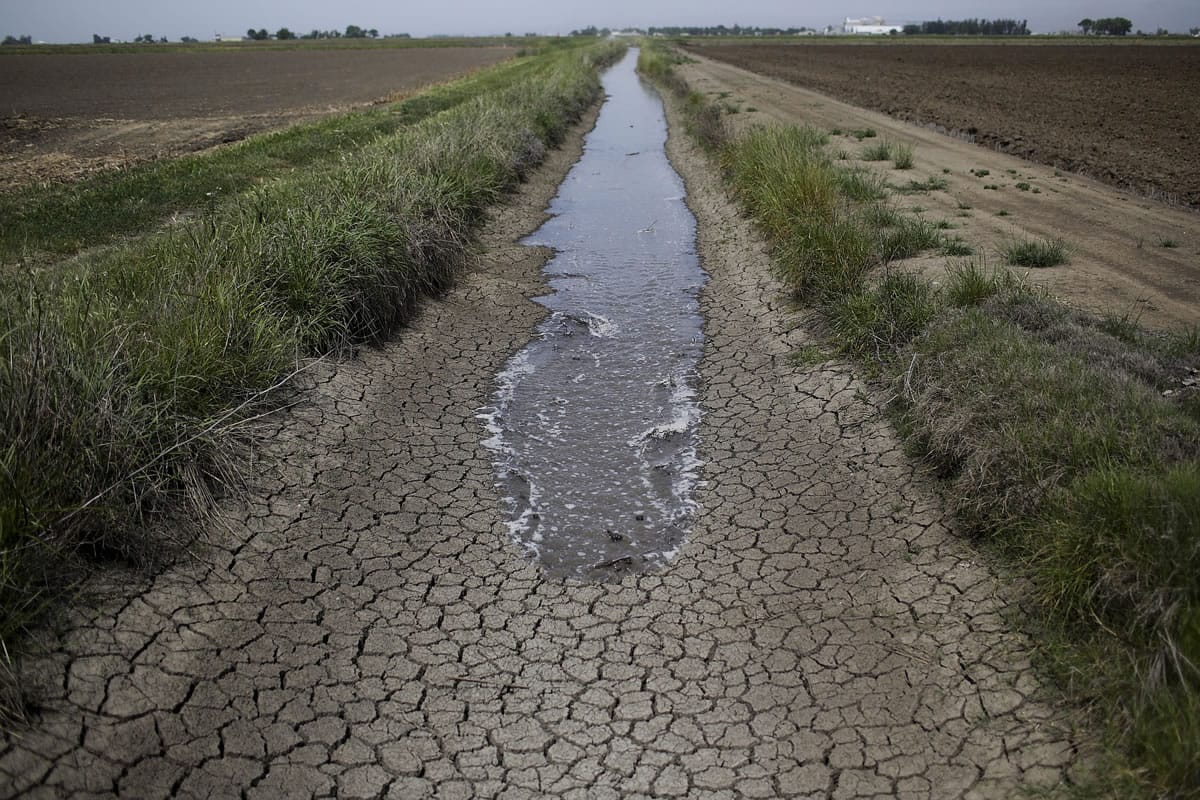SACRAMENTO, Calif. — The federal government said Friday it won’t send any of its reservoir water to California’s Central Valley for a second straight year, forcing farmers in the state’s agricultural heartland to again scramble for other sources or leave fields unplanted.
Many farmers had been bracing for the U.S. Bureau of Reclamation’s announcement as California’s drought enters its fourth year. Some farms are exempt from complete cuts under an antiquated water rights system dating to the Gold Rush era.
But many farmers are running out of such short-term options as uprooting orchards and tapping groundwater wells.
“They were able to Band-Aid things together last year just to keep their trees alive,” said Ryan Jacobsen, executive director of the Fresno County Farm Bureau. “The first aid kit we had last year is really not available this year.”
The Central Valley Project conveys water through a system of dams and reservoirs and 500 miles of canals. The agency says it can irrigate up to a third of California’s agricultural land when water is flowing.
When planning deliveries, the federal government has mandatory obligations to farms and communities holding senior water rights, including the city of Sacramento, and wildlife refuges protected by federal law to restore fish habitats, said Ron Milligan, a Central Valley Project operations manager.
Agriculture ends up bearing much of federal water cuts during dry periods. Farmers in the San Joaquin Valley received only 10 percent of their requested amounts in 2009 and 20 percent in 2013. Two consecutive years of no allocations is unprecedented.
Farmers are instead turning to storage supplies and pumping from largely unregulated groundwater wells that are quickly being depleted.
Paul Betancourt spent $40,000 to renovate wells on his 765-acre west Fresno County farm, where his family grows cotton, almonds, wheat and onions. He can keep watering his crops this year but says groundwater isn’t a long-term solution.
“We are draining a finite supply of water,” he said. “It was ugly last year, and it’s going to get uglier this year.”
California is increasing distribution from a separate state-operated system of reservoirs and canals with fewer mandatory obligations. The State Water Project announced last month that it could provide local agencies and farmers 15 percent of the water they requested, up from 5 percent last year.
Some communities and endangered wildlife that rely on federal water will receive some water but still suffer cuts. Urban areas, including the San Francisco Bay Area and Sacramento area, will receive a quarter of typical water allotments but could receive more if public health is threatened.
The water in the snowpack, California’s primary water source, is at a fifth of its normal level, according to state officials. Federal officials said they don’t expect a snow survey next week to show improved conditions.
With enough precipitation, the project could provide more water later in the year.
Paul Wegner, president of the California Farm Bureau Federation, said the federal government’s announcement is another sign California needs to speed up construction of water storage projects and to change laws that require the government to prioritize the preservation of the environment and fish species.
“It’s maddening because California still struggles to manage water wisely and flexibly, especially in dry years,” he said in a news release.



